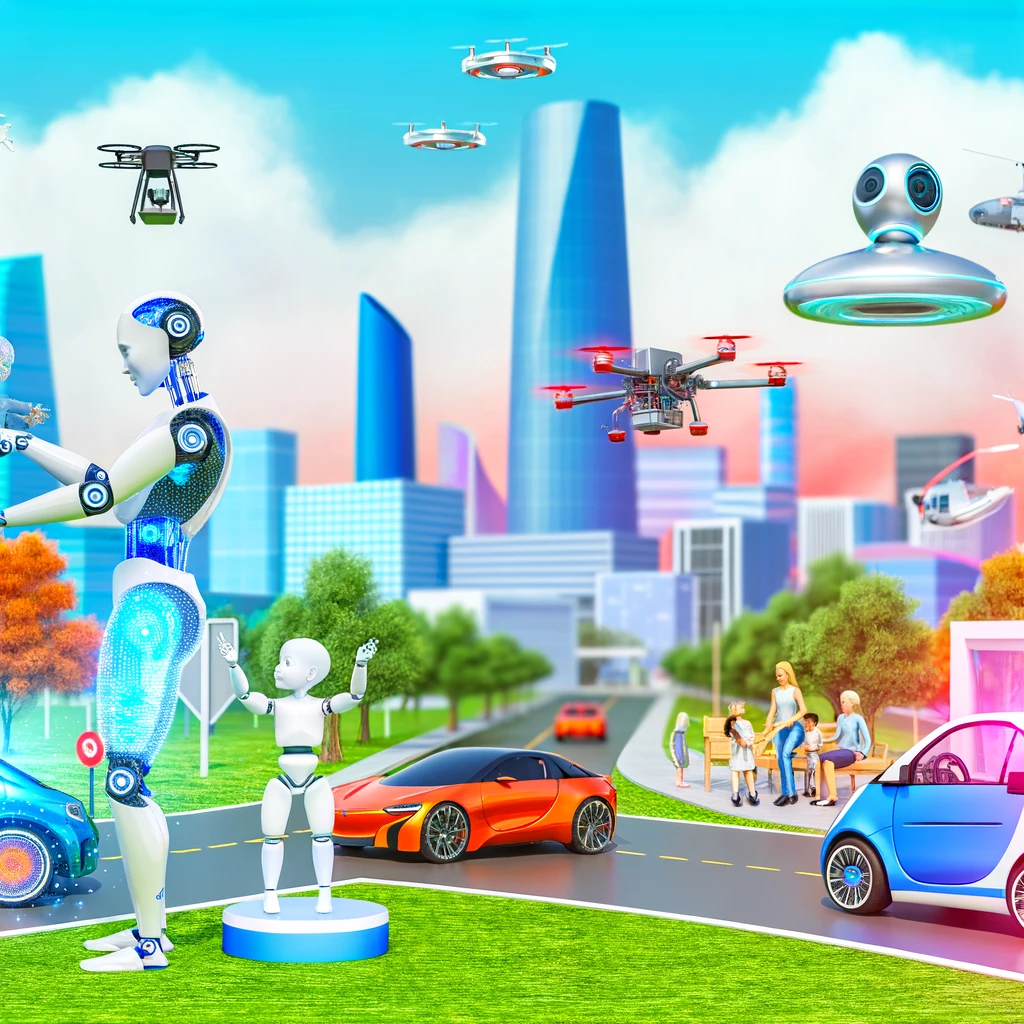In an era where technology evolves at an unprecedented pace, Artificial Intelligence (AI) stands out as a beacon of transformative power, reshaping how we live, work, and interact with the world around us. Yet, for many, AI remains a concept shrouded in mystery and complexity. This article aims to demystify AI, breaking down its components and exploring its vast applications in a manner that’s accessible and engaging for those without a technical background.
What is Artificial Intelligence?
At its core, Artificial Intelligence is the science and engineering of creating intelligent machines, particularly intelligent computer programs. It’s about designing systems that can think, learn, and adapt in ways that were traditionally considered unique to human intelligence. This includes problem-solving, understanding language, recognizing patterns, and making decisions.
AI can be as simple as a computer program that plays chess or as complex as a self-driving car navigating through city traffic. The key feature of AI is its ability to process large amounts of data and learn from it, enabling these systems to perform tasks that would require human intelligence.
The Pillars of AI
AI encompasses various subfields, each focusing on different aspects of creating intelligent systems. Here are some of the main areas within the domain of AI:
1. Machine Learning
Machine Learning (ML) is perhaps the most vibrant and rapidly evolving branch of AI. It’s based on the idea that systems can learn from data, identify patterns, and make decisions with minimal human intervention. ML systems improve their performance as they are exposed to more data over time. This area includes deep learning and neural networks, which are inspired by the human brain’s architecture and function.
2. Natural Language Processing
Natural Language Processing (NLP) is the technology behind how computers understand, interpret, and generate human language. From virtual assistants like Siri and Alexa to translation services and chatbots, NLP enables machines to communicate with humans in our own languages, making AI much more accessible and useful in everyday life.
3. Robotics
Robotics integrates AI with mechanical engineering to create robots that can perform tasks that are dangerous, tedious, or impossible for humans. These range from manufacturing robots in factories to exploratory robots in space or the deep sea. AI in robotics enables these machines to navigate complex environments and make autonomous decisions.
4. Computer Vision
Computer Vision allows machines to interpret and understand the visual world. By processing, analyzing, and understanding images or videos, AI systems can identify objects, classify them, and react to what they “see.” This technology powers facial recognition systems, medical imaging analysis, and even the filters on social media platforms.
5. Expert Systems
Expert systems emulate the decision-making ability of a human expert. By applying rules and data, these AI systems can solve complex problems in specific domains, such as medical diagnosis, financial analysis, or weather prediction. They are particularly useful for providing decision support in fields where human expertise is scarce or needs to be augmented.
The Impact of AI Across Industries
AI’s versatility allows it to be applied across virtually all industries, revolutionizing traditional practices and enabling innovations that were once thought impossible:
- Healthcare: From diagnostics to personalized medicine, AI is enabling more accurate and faster analyses, improving patient outcomes and the efficiency of care.
- Finance: AI algorithms detect fraudulent activities, automate trading, and offer personalized financial advice, transforming how we manage money.
- Retail: AI enhances customer experiences through personalized recommendations, virtual assistants, and supply chain optimizations.
- Transportation: From optimizing logistics to powering autonomous vehicles, AI is making transportation safer and more efficient.
- Education: Adaptive learning systems offer personalized educational experiences, catering to the unique needs of each student.
Embracing the AI Revolution
As AI continues to advance, its potential to benefit society grows exponentially. However, it also raises ethical and societal questions that need to be addressed, such as privacy concerns, the impact on employment, and ensuring AI is used responsibly.
Understanding AI and its applications is the first step towards navigating its implications positively. By demystifying this technology, we can better appreciate the opportunities it presents and engage in meaningful discussions about its role in our future.
In conclusion, Artificial Intelligence is not just a buzzword or a futuristic dream; it’s a tangible, rapidly evolving field that is reshaping our world in profound ways. Whether you’re a business leader, a policy-maker, or simply a curious mind, understanding AI is essential to navigate the opportunities and challenges it presents. As we stand on the brink of this AI revolution, it’s an exciting time to learn, adapt, and be part of shaping a future where technology and humanity converge in harmony.


Comments are closed